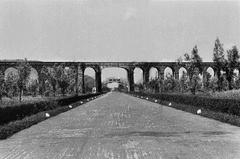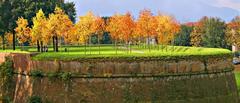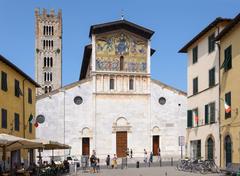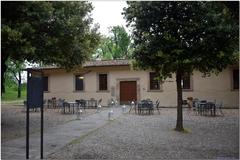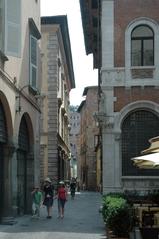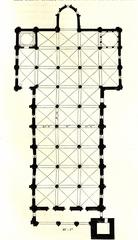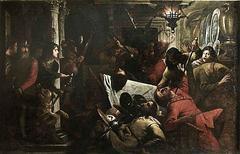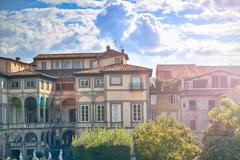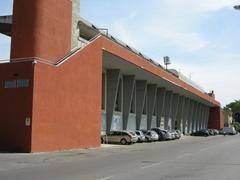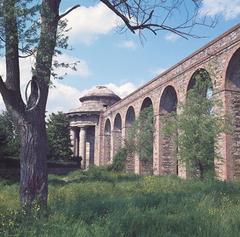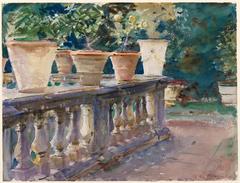Monument to Benedetto Cairoli in Lucca, Italy: Visiting Hours, Tickets, and Historical Significance
Date: 14/06/2025
Introduction
In the heart of Lucca, Tuscany, the Monument to Benedetto Cairoli stands as a testament to Italy’s journey toward unification and the city’s vital role in the nation’s modern history. This detailed guide explores the monument’s historical and cultural significance, artistic features, visiting hours, accessibility, and how it fits into a memorable itinerary of Lucca’s renowned historical sites.
Whether you’re a history enthusiast, art lover, or a curious traveler, the Monument to Benedetto Cairoli offers a meaningful connection to the spirit of the Italian Risorgimento and provides an accessible, enriching stop amid Lucca’s vibrant streets and piazzas (Lucca Tourism, Wikipedia: Benedetto Cairoli).
Who Was Benedetto Cairoli?
Benedetto Cairoli (1825–1889) was a prominent figure in the Risorgimento, Italy’s 19th-century movement for national unification. Born in Pavia, Cairoli fought alongside Giuseppe Garibaldi’s volunteers and later served twice as Prime Minister of Italy. His commitment to liberal reforms and national unity, coupled with the sacrifices made by his family during the wars for independence, made him a symbol of patriotism. Cairoli’s legacy is honored in Lucca through this monument (Benedetto Cairoli – Britannica, Fratelli Cairoli – Wikipedia (Italian)).
The Monument in Lucca: Artistic Design and Features
The Monument to Benedetto Cairoli is a significant example of late 19th-century commemorative sculpture. Created by Urbano Lucchesi, a renowned Lucchese sculptor, the marble bust presents Cairoli in a dignified, contemplative pose. Lucchesi’s attention to detail—seen in the textures of Cairoli’s hair, beard, and clothing—blends neoclassical tradition with the realism popular in his era. The monument’s modest scale and public placement invite close reflection and underscore the values of humility and civic virtue that Cairoli embodied (Monumento a Garibaldi (Lucca) – Wikipedia (Italian)).
An inscribed pedestal anchors the monument in its historical context, while its location in a prominent city square ensures ongoing public engagement.
Historical and Cultural Context
Lucca’s monument to Cairoli is part of a broader wave of commemorative art following Italian unification. Such monuments served as both tributes to individual heroes and tools for nation-building, fostering shared identity and memory. In Lucca—a city distinguished by its medieval and Renaissance heritage—the addition of Risorgimento monuments like Cairoli’s reflects its embrace of modern Italian values and its integration into the national narrative (Lucca: Guide, History, and Facts – Italia.it).
Urbano Lucchesi, responsible for several Risorgimento monuments in Lucca, was chosen for his artistic prowess and his ties to the city. His works, including those dedicated to Garibaldi and Mazzini, collectively narrate Italy’s struggle for freedom and unity.
Symbolism and Interpretive Layers
The monument’s artistic choices are rich in symbolism. Rather than depicting Cairoli in military garb or action, Lucchesi presents him as a statesman and thinker, emphasizing his political contributions. The use of marble, a material associated with purity and permanence, underscores the enduring nature of Cairoli’s legacy. The restrained ornamentation keeps the focus on the subject’s character, reflecting contemporary accounts of Cairoli’s humility and integrity.
The monument also functions as a focal point for civic rituals and commemorations, sustaining its role as a living part of Lucca’s cultural landscape (Wikipedia: Benedetto Cairoli).
Location & How to Get There
The monument stands in one of Lucca’s main squares—either Piazza San Michele or Piazza Napoleone, according to different sources. Both are central, pedestrian-friendly, and easily reached on foot from Lucca’s train station or city gates. Piazza Napoleone, the city’s largest square, is especially notable for its proximity to the Palazzo Ducale and its frequent cultural events (Road Affair: 1 Day in Lucca Itinerary).
Visiting Hours & Admission
- Hours: The Monument to Benedetto Cairoli is an outdoor public monument accessible 24/7.
- Admission: There is no fee or ticket required.
Accessibility
Piazza Napoleone and Piazza San Michele are both spacious and flat, allowing easy access for visitors with mobility challenges. The surrounding area includes paved walkways, benches, and shaded spots for rest. While Lucca’s historic center features some cobblestone streets, the main squares and approaches are generally accessible (Northabroad: Lucca Tuscany Travel Guide).
Best Time to Visit & Practical Tips
- Best Season: Visit in spring (April–June) or autumn (September–October) for pleasant weather and fewer crowds.
- Photography: Morning and late afternoon light are ideal for capturing the monument’s details.
- Nearby Attractions: The monument’s central location allows you to combine your visit with Lucca’s Renaissance walls, Torre Guinigi, San Martino Cathedral, and Piazza San Michele (Earth Trekkers: Best Things to Do in Lucca).
- Guided Tours: Several local operators offer walking tours that include the monument and other Risorgimento sites. Booking in advance is recommended, especially during peak tourist periods.
Events, Commemorations, and Cultural Significance
The monument serves as a gathering place for national commemorations, including Festa della Repubblica (June 2) and anniversaries of the Risorgimento. During these events, the square comes alive with ceremonies, parades, and cultural festivities, reinforcing the monument’s role in living civic tradition (Lucca Historiae Fest).
Suggested Walking Itinerary Including the Monument
Morning:
- Stroll or cycle atop Lucca’s city walls for panoramic views.
- Enter the historic center via Porta San Pietro or Porta Santa Maria.
Mid-Morning:
- Arrive at Piazza Napoleone or Piazza San Michele, visit the Monument to Benedetto Cairoli, and enjoy people-watching or a coffee at a nearby café.
Late Morning:
- Visit Palazzo Ducale and San Martino Cathedral.
- Explore Torre Guinigi or Piazza San Michele.
Afternoon:
- Enjoy local cuisine at a trattoria.
- Continue to Piazza dell’Anfiteatro or the city’s botanical gardens.
Frequently Asked Questions (FAQ)
Q: Is there an entrance fee for the Monument to Benedetto Cairoli?
A: No, the monument is outdoors and free to visit at any time.
Q: What are the visiting hours?
A: The monument is accessible 24/7 as it is located in a public square.
Q: Are guided tours available?
A: Yes, many guided walking tours of Lucca include the monument. Check with local tour providers for details.
Q: Is the monument accessible for people with disabilities?
A: Yes, the square is flat and wheelchair accessible.
Q: Can I take photographs?
A: Absolutely. Early morning and late afternoon provide the best lighting.
Q: What other attractions can I visit nearby?
A: Palazzo Ducale, San Martino Cathedral, Torre Guinigi, Piazza San Michele, and the Renaissance city walls are all within a short walk.
Visual and Multimedia Resources
- Wikimedia Commons: Monument to Benedetto Cairoli (Lucca)
- High-quality images and alt text: “Monument To Benedetto Cairoli in Piazza Napoleone, Lucca”; “Detail of Benedetto Cairoli Monument sculpture in Lucca”.
Further Resources and Official Links
- Benedetto Cairoli – Wikipedia (Italian)
- Benedetto Cairoli – Britannica
- Lucca: Guide, History, and Facts – Italia.it
- Monumento a Garibaldi (Lucca) – Wikipedia (Italian)
- Fratelli Cairoli – Wikipedia (Italian)
- Wikidata: Monument to Benedetto Cairoli (Lucca)
- Lucca Historiae Fest
- Visit Tuscany: Lucca
- Northabroad: Lucca Tuscany Travel Guide
- Florence Tips: Lucca
- Lucca Tourism Official Website
- Road Affair: 1 Day in Lucca Itinerary
- Savoring Italy: Lucca
- Earth Trekkers: Best Things to Do in Lucca
- Audiala App
Summary and Recommendations
The Monument to Benedetto Cairoli in Lucca is a vital symbol of Italy’s unification and the ideals of patriotism and civic virtue. Its central location, artistic merit, and accessibility make it an essential stop for visitors seeking an authentic encounter with Italian history. Enhance your experience by pairing your visit with guided tours, nearby historical sites, and Lucca’s vibrant cultural events. For up-to-date information, itineraries, and multimedia content, consult official tourism resources and the Audiala app.
Enjoy your exploration of Lucca’s rich historical tapestry!
